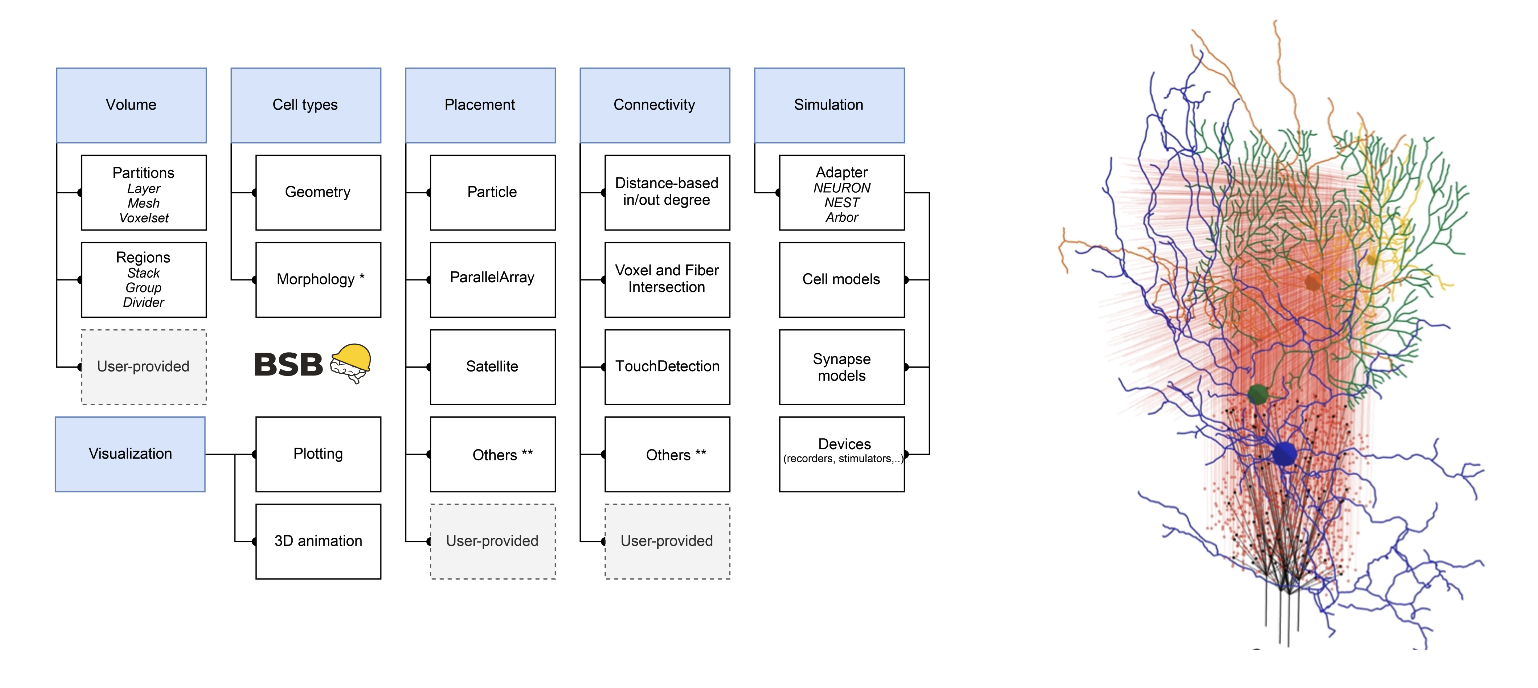- Paper Digest
Model simulations unveil the structure-function-dynamics relationship of the cerebellar cortical microcircuit
23 November 2022
A new research article from the Neurocomputation Unit of the department of Brain and Behavioural Sciences at the University of Pavia (UNIPV), in collaboration with the Brain Connectivity Centre of the Mondino Foundation, has just been published in Nature Communications Biology, providing a new model-based ground truth about organization and functioning of the cerebellar circuit. Cerebellar modelling using realistic morphologies poses specific problems, mostly related to the anisotropy and regular geometry of the network, that are not easily manageable with existing modelling tools. Therefore, the UNIPV unit has developed the Brain Scaffold Builder (BSB), the first component framework (https://github.com/dbbs-lab/bsb) for multiscale neural circuit modelling. The cerebellar model represents a new resource for investigating structure-function-dynamics relationships, shedding light on local microcircuit computations and neural correlates of behaviour. Given the “scaffold” design, new neurons and mechanisms can be plugged-in to address ontogenesis, species differences (for example in humans) and brain pathologies, in order to predict emerging dynamics.

Read the full paper
doi 10.1038/s42003-022-04213-y



